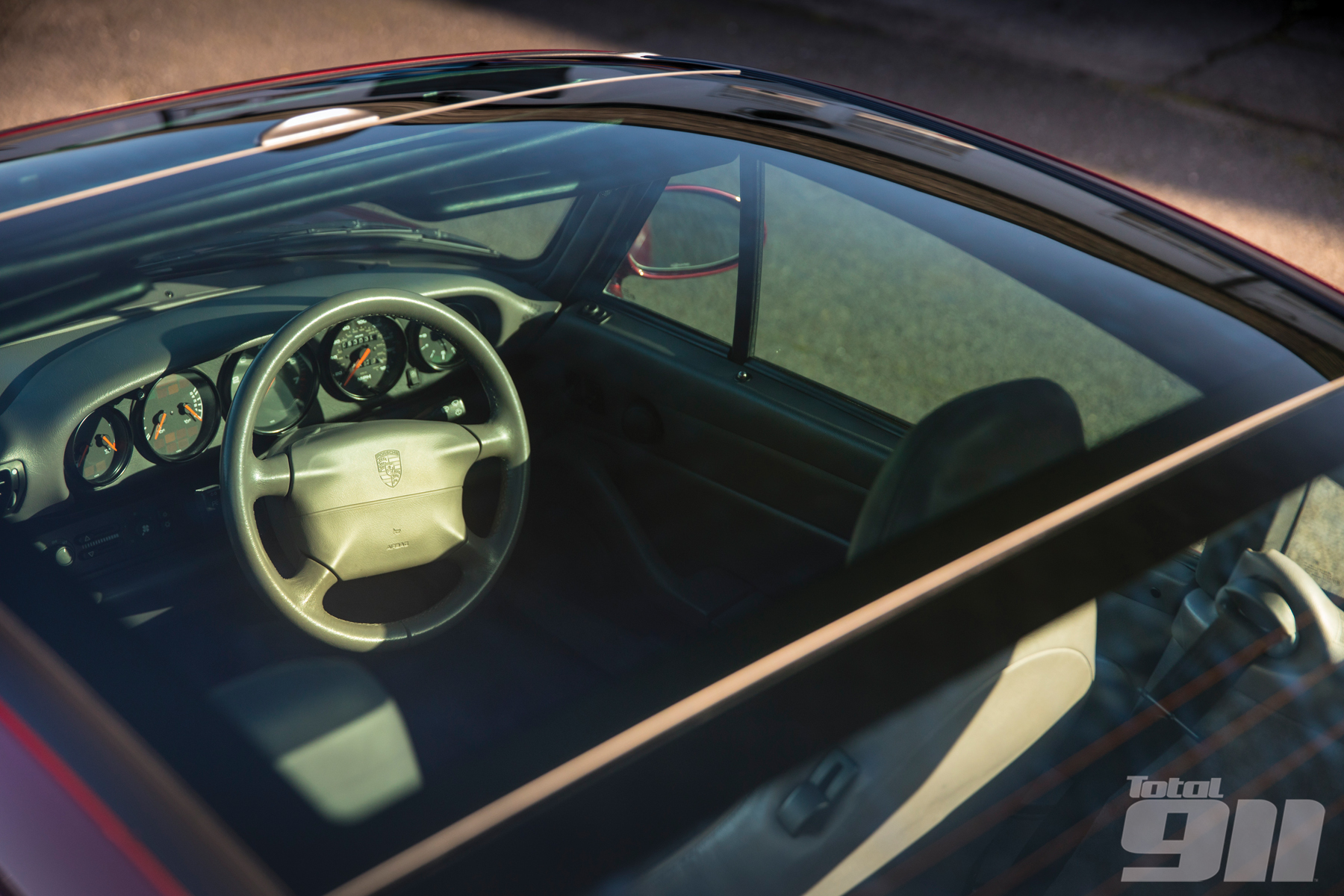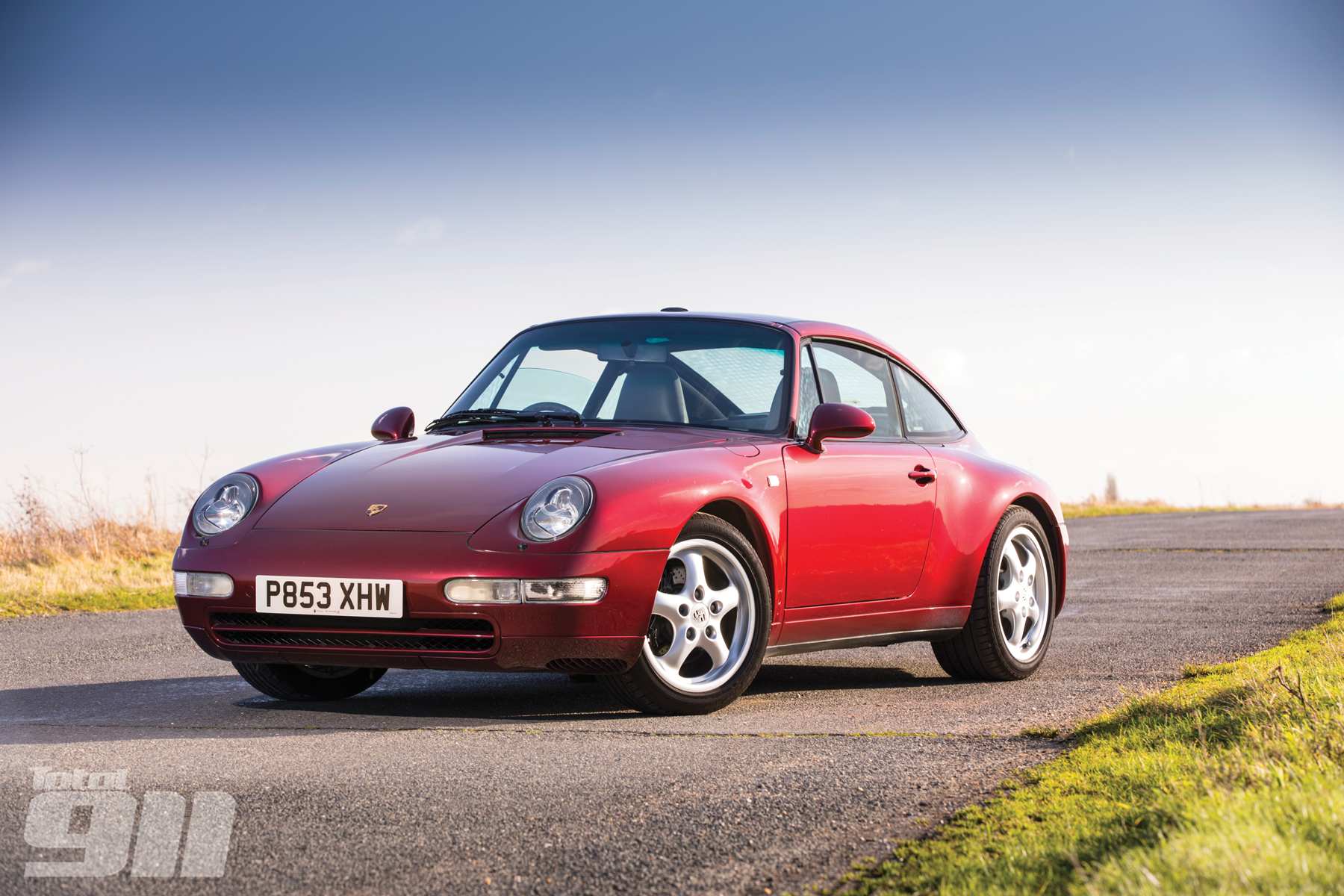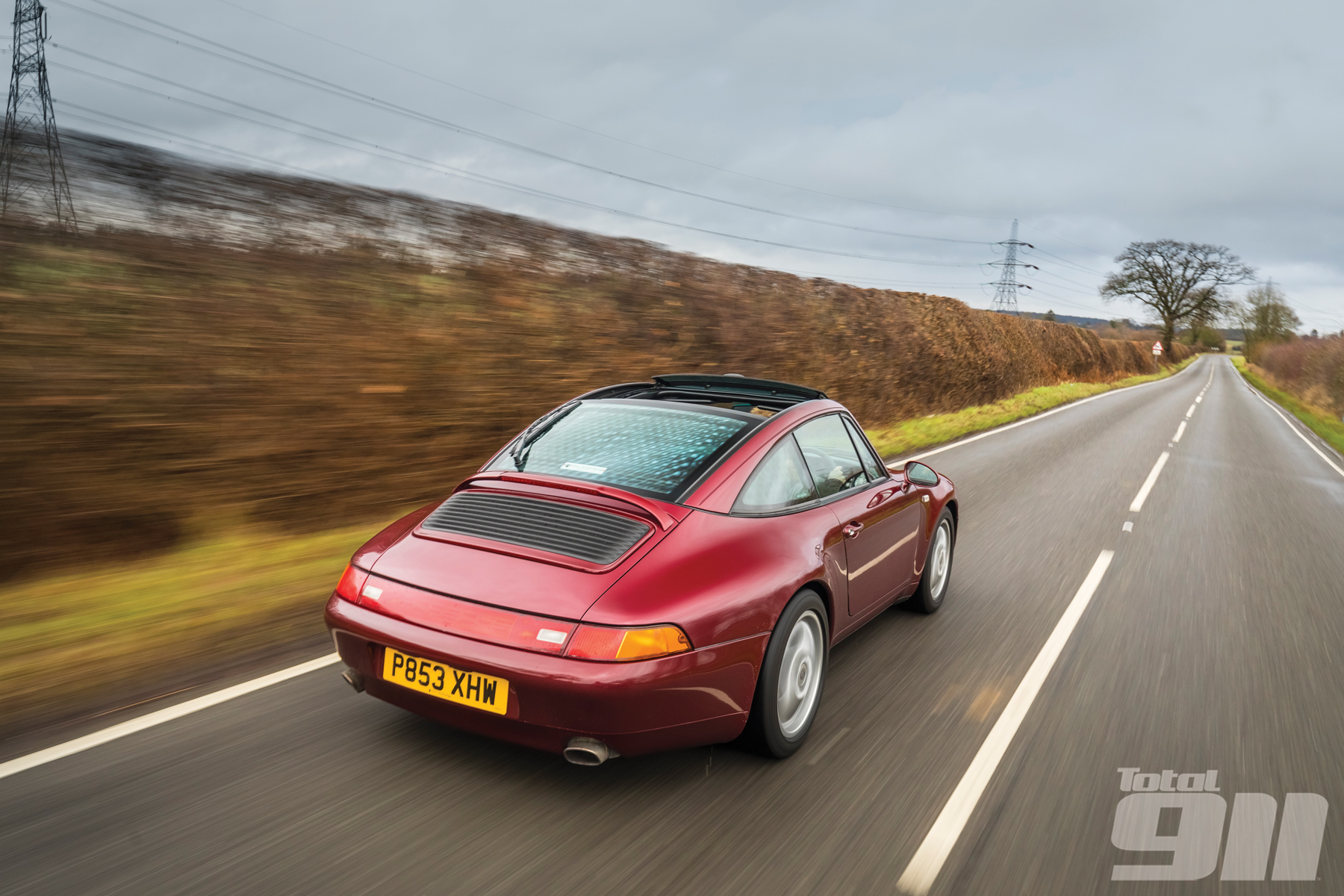993 Targa: air apparent?
The sky is the colour of slate, the temperature scarcely into single figures and there’s a fine drizzle hanging in the air. This isn’t a
Targa sort of day. Photographer Dan and I are killing time in the Paul Stephens showroom, ogling Porsches and contemplating a third mug of tea. Dan wants the rain to stop before he can start snapping, but there’s a fully-fuelled 993 Targa outside and I’m itching to get behind the wheel. Eventually, Dan relents. “We’ll just have to work around it,” he shrugs as we climb aboard, raindrops now drumming steadily on the glass roof.
The Targa itself started life as a work-around. Porsche feared the US would outlaw full convertibles on safety grounds, so the halfway-house Targa – with its fixed roll-hoop and removable metal roof – was a means to sidestep legislation back in the 1960s. The drop-top ban never materialised, but Porsche’s Targa proved a sales success and soon became a fixture of the 911 range. It evolved gradually for almost three decades until a radical reinvention in 1996. The 993 Targa had arrived.

Nobody could accuse the 993 of being a work-around. This thoroughly modern Targa boasted a panoramic glass roof that retracted electrically behind the rear window. No longer did the driver have to remove a heavy, cumbersome Targa top and find somewhere to stow it; the 993 morphed from coupe to near-cabriolet in around 10 seconds, and at the touch of a button. The engineering was complex, but the execution brilliantly simple.
The styling, too, was a study in subtle elegance. Interestingly, the 993 Cabriolet, upon which the Targa is based, had been designed to more closely resemble the Coupe. Stylist Tony Hatter said: “I never liked the look of the early Cabriolets. The classical 911 shape is the Coupe. With the 993, we tried to get some of that form into the roof.”

This thinking also permeates the Targa; to the untrained eye, it’s almost indistinguishable from its Coupe cousin. Drag coefficient, too, is an identical 0.33. Unless you happen to be looking from above, the rear side windows – which taper to a sharp point instead of a smooth curve – are the obvious giveaway. Note also the pop-up wind deflector aft of the front screen, two-piece alloys with five concave spokes, absence of rain gutters on the roof and ‘Targa’ script on the engine lid.
‘Our’ Arena red Targa is for sale for £52,995 at the time of writing. At some point during the past two decades, its factory split-rims have been swapped for the more familiar Cup alloys and the rear badge has gone missing but, aftermarket radio aside, the car is otherwise standard. “We rarely see modified 993s,” explains Tom Wood, sales executive at Paul Stephens. “Owners tend to keep them original and simply enjoy driving them.”
The roof remains closed, but I’m already enjoying this one. The expanse of thermally insulated, UV-resistant glass overhead feels like an aircraft-style canopy. It floods the cabin with light, an effect exacerbated by the Classic grey carpets and trim (most owners opted for Midnight blue or black). In contrast to the claustrophobic 993 Cabriolet, with its huge three-quarter blind spots and plastic rear window, the Targa feels airy and accommodating. It looks better than the Cab when ‘open’, too.
For the full road test article on the Porsche 993 Targa, order your copy of Total 911 issue 163 here or download to your Apple or Android digital device.

Comments (0)